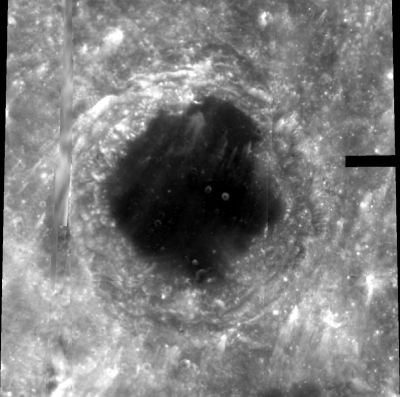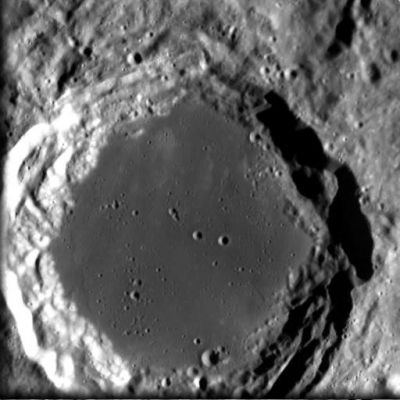Lomonosov
Contents
Lomonosov
|
Lat: 27.3°N, Long: 98.0°E, Diam: 92 km, Depth: km, Rükl: (farside), [/Stratigraphy Lower Imbrian] |


Left: Clementine, Right: SMART-1
Table of Contents
[#Lomonosov Lomonosov]
[#Lomonosov-Images Images]
[#Lomonosov-Maps Maps]
[#Lomonosov-Description Description]
[#Lomonosov-Description: Wikipedia Description: Wikipedia]
[#Lomonosov-Additional Information Additional Information]
[#Lomonosov-Nomenclature Nomenclature]
[#Lomonosov-LPOD Articles LPOD Articles]
[#Lomonosov-Bibliography Bibliography]
[#Lomonosov-M. V. Lomonosov in the Sourcebook Project (William R. Corliss) M. V. Lomonosov in the Sourcebook Project (William R. Corliss)]
Images
LPOD Photo Gallery Lunar Orbiter Images Apollo Images
Maps
([/LAC%20zone LAC zone] 46A3) USGS Digital Atlas PDF
Description
Description: Wikipedia
Additional Information
Although Lomonosov is a relatively old crater, the mare lavas covering its floor have a crater count age of only 1-2 billion years, the youngest age known on the farside and one of the 8 youngest lavas on the Moon. Gillis, Spudis and Bussey (1997) The geology of Smythii and Mariginis Basins using integrated remote sensing techniques. Lunar and Planetary Science XXVII #1293.
Nomenclature
- Mikhail Vasilyevich Lomonosov (November 19, 1711 – April 15, 1765) was a Russian scientist, cartographer, writer and polymath who made important contributions to literature, education, and science. Lomonosov was the first person to record the freezing of mercury, and to hypothesize the existence of an atmosphere on Venus based on his observation of the transit of Venus of 1761 in a small observatory near his house in Petersburg. Believing that nature is subject to regular and continuous evolution, he demonstrated the organic origin of soil, peat, coal, petroleum, and amber. In 1745 he published a catalogue of over 3,000 minerals, and in 1760 he explained the formation of icebergs.
- Discovered in Lunik 3 imaging of farside and named in Atlas of the Far Side of the Moon and approved by the IAU in 1961 ([/Whitaker Whitaker], p 232).
- Montes Lomonosov (not related to crater Lomonosov) was an unofficial name for the mountainous region south-southwest of nearside crater Archimedes. According to the IAU, that region is officially known as Montes Archimedes. The name Montes Lomonosov was printed in the book The Moon by A.V.Markov. - DannyCaes DannyCaes May 23, 2014
LPOD Articles
Bibliography
M. V. Lomonosov in the Sourcebook Project (William R. Corliss)
- Confirmation of Outer Atmosphere Asymmetry Postulated to Explain the False Zodiacal Light (E.R.Hope, Nature, 1961), in: Mysterious Universe, a handbook of astronomical anomalies (1979), page 349.
This page has been edited 1 times. The last modification was made by - tychocrater tychocrater on Jun 13, 2009 3:24 pm - afx3u2